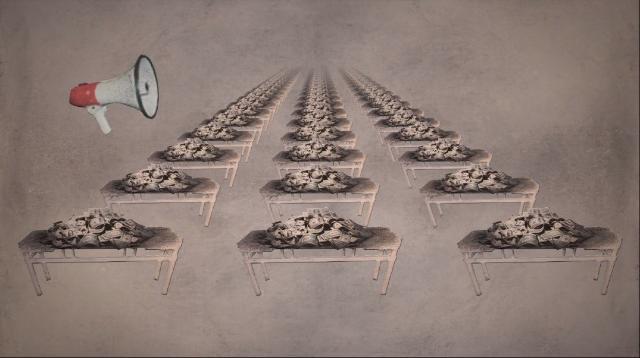
Members of the Arts of Africa and the Global South research team, Stary Mwaba and Ruth Simbao, participated in the symposium “Referencing China and East Asia in Southern African Visual Culture”, which was held at the Goethe Institute in Johannesburg in April. The symposium was organised by Dr. Juliette Leeb-du Toit (SRA: Wits University, UK and the University of KwaZulu-Natal) and Dr. Ross Anthony (Acting Head: Centre for Chinese Studies, Stellenbosch University).
Stary Mwaba, an MFA candidate in the Arts of Africa and the Global South research team in the Fine Art Department, presented a paper on his installation, Chinese Cabbage, which was first displayed in his solo exhibition, Life on Mars, at the Künstlerhaus Bethanien in Germany in 2015. At the Africa–China symposium, Mwaba talked about his personal inroad into the Zambia–China debate, which draws from a family history of living along the Tazara Railway that was built by the Chinese in the 1960s, as well as the experience of his daughter attending a Chinese-run international school in Lusaka. Mwaba is currently expanding this research as part of his MFA studies at Rhodes by collecting oral narratives along the line of rail in Zambia and by addressing, through his painting practice, issues pertinent to the controversial copper slug known as Black Mountain in Kitwe.
Ruth Simbao presented the keynote address, “The Direction of Place and the Orientation of Discourse: Portrayals of ‘China’ that Reach Sideways”, in which she asked what happens when the discourse of China–Africa collides with the discourse of contemporary African art. Arguing for a shift away from broad artistic responses to the China–Africa discourse that are often driven by Western anxiety, she focused on artistic portrayals of bottom-up experience, personal engagement and sideways linking in the works of artists Hua Jiming, Caryn Scrimgeour and Masimba Hwati, as well as the filmmaker Lebogang Rasethaba.
Simbao also presented a paper titled “A Song of Uhuru and a Difficult Dance: Anawana Haloba’s Sound Memories of TAZARA” that was part of the parallel Chinafrika programme organised by Jochen Becker and Michael MacGarry. In this paper she discussed Haloba’s installation that was, in part, censored at the 2017 Shanghai Biennale, and she argued that Haloba’s response to this censorship meaningfully resisted simplistic sensationalism typical of the China–Africa debate.
Leeb-du Toit, Anthony and Simbao are currently editing a scholarly book based on papers presented at the symposium.
Photo: Anawana Haloba, A Dragon King at Sleepy Pride Rock (detail) 2016. Video animation. Courtesy of the artist.